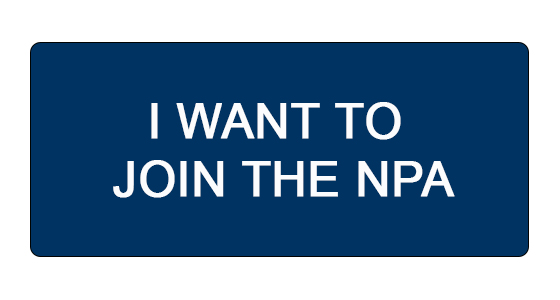How to sell VALUE over PRICE
BY BOB PHIBBS, THE RETAIL DOCTOR
VALUE SELLING IS, AT ITS HEART, the moving of more merchandise. No matter how many facts you know about a product, if the consumer doesn’t see the value in owning it, they’ll pass on it. That’s why selling on value over price is a common theme in all sales training programs and the key to providing great customer service.
VALUE VS. PRICE
What are the most important distinctions between value and price? The price tag is what someone will pay for a product or service. The value is what a consumer perceives as the benefits they will get from it. It goes far beyond psychological pricing of an item at $99.99 versus $100.
When salespeople mention how a product is lightweight due to the material, or how durable an item is and less likely to break, or how stains won’t set due to the premium fabric finish, those are all value statements. Those products and services give the buyer something easier to lift or lighter to wear, something that lasts longer or looks new longer. If those qualities are important to a potential customer, they will buy it. Customer perception of a product’s value is everything.
How do customers perceive value vs. price? Many shoppers and poor salespeople absolutely equate price with value. They believe falsely that getting a low price means it is a great value. As anyone who has ever purchased based solely on an extremely low price, or has purchased something they didn’t really need just because it was cheap, will tell you, they feel like they wasted their money.
That’s because they realize as soon as they get it home that the product wasn’t worth what they paid for it.
And what makes value distinct from price in customers’ minds? Value will always be personal and different for everyone. For example, a father may purchase a security system with extra features because he hopes it will give him peace of mind when he is traveling away from his family. A baker may purchase a high-priced flour for their rustic breads because they value the consistent results over the cheaper alternatives.
That’s why it is so important to look at selling value over price as a truly personalized approach to increase customer service and also profit.
IMPORTANCE OF THE VALUE OF A PRODUCT
Why should the value of a product be more relevant than its price? The old idea is that you think about price just once, but you enjoy the value of using the product for a lifetime. More expensive products will not need to be replaced as often becoming less expensive than ones you have to replace over and over again.
How can you set the value of a product? When a salesperson is qualifying a customer and asking about their project or problem, they need to understand what pain points are most important to that shopper. When that salesperson selects an item based on solving the shopper’s needs and removing those pain points, they should mention three ways a product is right for that specific customer. A shopper who sees how a product will solve all their needs and then some, will move heaven and earth to buy it.
How is your brand strengthened by treating your products as though they are valuable rather than expensive? When you see your merchandise as valuable, you can convince consumers that purchasing it is an investment, and not an expense. For example, a good pair of shoes can have the soles replaced. A cheap pair is disposable. A custom jacket that costs more will fit better because the pieces are not cut en masse.
HOW TO SEPARATE VALUE FROM PRICE
What kind of products become more attractive when their value is separated from their higher price? Luxury brands represent increased value to a consumer. While a cheap watch will tell time, an Omega Seamaster will give a client a sense of pride in the craftsmen who made it. The engineer who values timeless design and meticulous precision will value products made the same way from fine jewelry, to fine footwear, to fine whiskey made in small batches.
Professional salespeople know it takes a variety of sales techniques to connect the benefits of a luxury item to help a customer see the value of spending more money.
Successful retailers use stories to separate value from price with their customers. They know details make stories stick. Because customers see in pictures, these retailers create compelling ones.
Begin by coming up with key benefits of your more expensive products. Let’s say you carry a luxury fabric embedded with a chemical that doesn’t sun-fade. You could just say that to a prospective buyer, but that won’t help you get the sale or profit margin.
But what if you actually had another customer with a west facing living room with floor to ceiling windows? What if she had told you she tried everything, but her furniture got so sun-washed she feared her friends thought she shopped at a garage sale? She wasn’t concerned with pricing; she was concerned with longevity. She used your fabric in red and now, four years later, it still looks like it did the day Architectural Digest shot it. Share a story like this when selling to your customer, and they will realize that if it worked for a stranger, it will work for them too.
USE THESE 4 TIPS TO USE STORIES TO SEPARATE VALUE FROM PRICE:
1. Keep it brief. Your narrative should be less than one minute.
2. Be Authentic. Use a real story, either one you or a customer experienced or something you read about that actually happened to reinforce the value of what you are trying to sell to a customer.
3. Make it relevant. Make sure your story illustrates how one other customer received value after buying that same product.
4. State the point. Sum up the point in the end to show the customer standing in front of you that they’ll be happier
SUMMER 2021 | NATIONALPAWNBROKERS.ORG 31
when they buy this product. In the fabric example, it could be, “If it held up under those conditions, you can rest assured it won’t fade like cheaper fabrics you’ve had.”
What factors contribute to the value of a product? The way something is produced, the scarcity or limited availability of items, the rare materials it is made from, the sustainability, the ease of use, and even the status it imparts helps set value.
HOW TO SELL A PRODUCT’S VALUE
What can you do to make value appear significantly greater than price? Many employees know a great deal of technical knowledge about their more expensive luxury merchandise and are spilling more and more cold facts about a product in hopes they can build value in the customer’s eyes. But that’s only part of it. How many times have you purchased a TV, smartphone, camera, or appliance and never used many of the features? I’ll bet dozens.
Something only has value if it does what you want it to do with a minimum of effort. Some people call this selling features and benefits.
How does introducing an emotional component to the value of a product make it a more attractive purchase? As you build value, you can paint the picture of how the customer will feel wearing the item or how the gift-giver will feel knowing the merchandise does everything the recipient expects.
How do customers perceive value vs. price? Many customers will balk at an item they don’t think is worth the price. The price of an item, in terms of actual dollars, becomes secondary to what the product can provide for the consumer.
THE WEAKEST LINK
Price is the weak link in the sales process. When salespeople harp on and on about how something is on sale or cheaper, all the customer can think about is the selling price and all the money coming out of their wallet. This distracts them from other considerations like the quality of the product and whether it will best serve their needs.
A POSITION OF STRENGTH
The easiest way to avoid this weakness is by putting your sales professionals in a position of strength with a sales process that builds value in your local market. Giving them the skills and knowledge to focus more about understanding, listening for, and observing unique buyer motivations is key. Armed with these tools, your salespeople can keep the conversation focused on benefits (value) instead of costs (price).
MAKING EVERY SALE A VALUE SALE
Customers come into your store with their own notions about the value of products. It could be based on a friends’ recommendation, a web search, or trending products they saw on social media. They may not want to buy high priced items because they don’t feel there’s a difference in quality or value. What they don’t have is the wisdom that sales training has given your salespeople. Using that wisdom of how products compare based on customer feedback and rapport building tactics, salespeople can show customers that there really is a difference between good, better, and best.
GETTING IT TO WORK FOR YOU
Value selling needs to occur every time a customer walks into your store and is engaged with your sales force. With the chance the shopper’s smartphone will beep, buzz or vibrate, there’s no time for winging it.
Well trained salespeople will automatically rely on value selling in any sales situation, whether to your current customers or new potential buyers.
To sell value over price, your salespeople will need to be examining the customers’ expectations and motivators to buy. Why, of all the days they could walk in, did they come into our store? Every bit of information the customer provides will help your salesperson create a narrative that connects the value of the product to the customer’s wallet. Once that connection has been established, the customer begins to see the product as an asset instead of a cost.
AND YOU SEE THE TRUE ROI OF YOUR SALES
TRAINING EFFORTS.
To do that, your sales team needs to know how products are used in a variety of situations so they can match the value of the product to the needs of a wide variety of customers. They also need a strategy that shows them how to cross sell, or add-on, to every sale and increase the value of the original product well beyond the increase in price. That also increases the average ticket.
In today’s marketplace there are plenty of vendors cutting corners with plastics, polyesters, and fillers. Your sales staff can help educate your customer about what goes into a premium item. Instead of a single, low profit margin sale, they can make a higher sale (upsell) to a customer who has a better understanding of the quality you offer.
TAKEAWAYS
Value selling starts with the customer, not the product. Create an effective description that caters to the customer’s values. Then tell a story that anticipates a customer’s concerns that it won’t do what they want it to do by showing in words how it provided value to another customer.
VALUE-BASED SELLING SHOULD BE THE FOUNDATION OF ALL OF YOUR SALES EFFORTS.
Establishing the value of your items and educating your customers about that value makes it possible to avoid the discounts that eat into margins. It puts your salespeople on strong footing, allowing them to deal with customers on the basis of product benefits as opposed to product costs. That’s called selling value over price.




